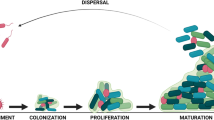Bacterial chromosomes have genes for transport proteins for inorganic nutrient cations and oxyanions, such as NH4 +, K+, Mg2+, Co2+, Fe3+, Mn2+, Zn2+ and other trace cations, PO4 3-, SO4 2- and less abundant oxyanions. Together these account for perhaps a few hundred genes in many bacteria. Bacterial plasmids encode resistance systems for toxic metal and metalloid ions including Ag+ AsO2 -, AsO4 3-, Cd2+, Co2+, CrO4 2−, Cu2+, Hg2+, Ni2+, Pb2+, TeO3 2−, TI+ and Zn2+. Most resistance systems function by energy-dependent efflux of toxic ions. A few involve enzymatic (mostly redox) transformations. Some of the efflux resistance systems are ATPases and others are chemiosmotic ion/proton exchangers. The Cd2+-resistance cation pump of Gram-positive bacteria is membrane P-type ATPase, which has been labeled with 32P from [γ-32P]ATP and drives ATP-dependent Cd2+ (and Zn2+) transport by membrane vesicles. The genes defective in the human hereditary diseases of copper metabolism, Menkes syndrome and Wilson’s disease, encode P-type ATPases that are similar to bacterial cadmium ATPases. The arsenic resistance system transports arsenite [As(III)], alternatively with the ArsB polypeptide functioning as a chemiosmotic efflux transporter or with two polypeptides, ArsB and ArsA, functioning as an ATPase. The third protein of the arsenic resistance system is an enzyme that reduces intracellular arsenate [As(V)] to arsenite [As(III)], the substrate of the efflux system. In Gram-negative cells, a three polypeptide complex functions as a chemiosmotic cation/protein exchanger to efflux Cd2+, Zn2+ and Co2+. This pump consists of an inner membrane (CzcA), an outer membrane (CzcC) and a membrane-spanning (CzcB) protein that function together.
Similar content being viewed by others
Author information
Authors and Affiliations
Additional information
Received 08 August 1997/ Accepted in revised form 01 November 1997
Rights and permissions
About this article
Cite this article
Silver, S. Genes for all metals—a bacterial view of the Periodic Table . J Ind Microbiol Biotech 20, 1–12 (1998). https://doi.org/10.1038/sj.jim.2900483
Issue Date:
DOI: https://doi.org/10.1038/sj.jim.2900483




